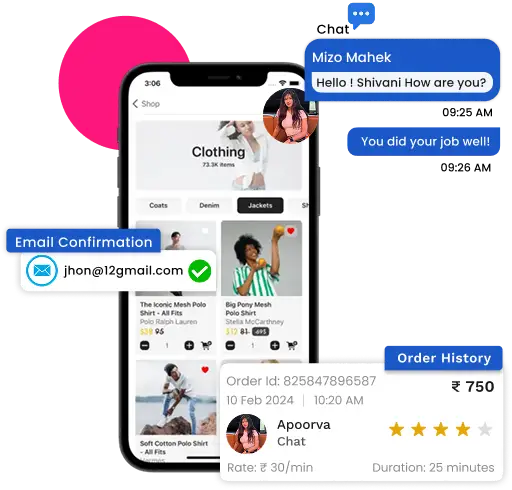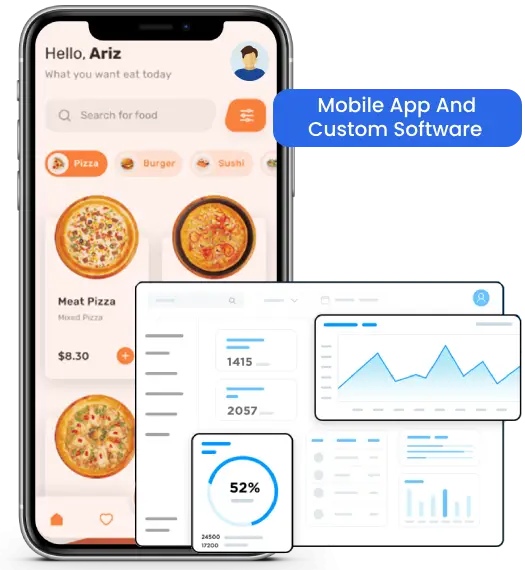The healthcare industry is at the dawn of a paradigm change, with the integration of technologies like wearable sensors and cloud analytics propelling the shift from reactive to preventative care. These advanced health monitoring systems enable continuous monitoring of patients’ vital health signs, such as body temperature, heartbeat, and blood oxygen levels. This crucial information is further transmitted in real-time to a centralized cloud platform, where advanced analytics detect anomalies and trigger alerts for healthcare providers. Further integrating sensor networks enhances the accuracy and reliability of health monitoring irrespective of the location and time. The system’s architecture enables an effective remote health monitoring system while facilitating timely medical intervention, eliminating geographical barriers.
The synergy between wearable sensors and cloud analytics creates powerful ecosystems that enable personalized, predictive healthcare that can prevent complications, reduce hospitalizations, and improve patient outcomes while lowering overall healthcare costs. This blog explores health monitoring systems, the role of wearable IoT systems in remote health monitoring, cloud analytics in healthcare, the integration of wearable sensors and cloud analytics, the benefits of integrating wearables with cloud analytics, and future trends and opportunities in cloud analytics.
Understanding Health Monitoring Systems
A health monitoring system can be understood as a series of actions of remote communication over the internet. It allows physicians to predict medical services of higher quality for their patients. It combines hardware sensors, software applications, communication networks, and analytical platforms. These systems operate continuously, gathering physiological data that traditionally required clinical visits to obtain.
Unlike traditional healthcare models that rely on periodic check-ups and patient-reported symptoms, modern health monitoring systems provide objective, continuous data streams. This approach enables healthcare providers to detect subtle changes in patient health, identify emerging problems early, and intervene before conditions become critical.
The effectiveness of these systems lies in their ability to transform raw sensor data into meaningful clinical insights. Advanced algorithms analyze patterns in heart rate, activity levels, sleep quality, and other metrics to identify deviations from normal baselines. When combined with patient history and clinical guidelines, these insights support more informed decision-making and personalized care plans.
Role of Wearable IoT System in Remote Health Monitoring
Wearable IoT systems are transforming remote health monitoring by offering real-time health monitoring and personalized interventions. They are changing the concept of traditional healthcare to smart healthcare.
The data collected by the wearable IoT system is remotely accessed, processed, and analyzed by healthcare professionals to improve healthcare service delivery. It provides ubiquitous healthcare designed to support patient-tailored treatment, adherence, proactive monitoring, effective diagnosis, early and accurate disease detection, pervasive care, and smart rehabilitation. It reduces the burden on the healthcare industry by timely intervention.
Wearable IoT initially designed for fitness tracking has evolved into comprehensive health monitoring systems that now serve as:
- A primary data collection layer in remote healthcare architectures
- A tool for continuous health monitoring, reducing the need for physical visits and enabling more accurate assessments
- A source of real-time alerts and emergency notifications, improving responsiveness for healthcare providers
- A seamlessly integrated component with smartphones, tablets, and cloud platforms, offering a holistic view of patient health
Remote Health Monitoring Assistant Services
Remote health monitoring assistant emerged as one of the powerful healthcare delivery models with a strong potential to improve global health outcomes.
Wearable sensors for remote health monitoring collect real-time physiological data through various sensing technologies, including photoplethysmography for optical measurements, bioelectrical impedance for body composition analysis, and accelerometry for motion detection. Several key benefits of employing remote health monitoring assistant services are
- Portability
- Non-invasive nature
- Ability for continuous monitoring without disrupting daily activities
- Enhanced patient engagement through personalized insights
- Early detection of issues for better clinical decisions
- Cost reduction by minimizing chronic diseases and postoperative care
However, certain limitations of wearable sensors for health monitoring exist, such as vast, noisy, and potentially incomplete data that becomes a hindrance to actionable health insights; sensor inaccuracy; issues of data security; user compliance; battery life; and the need for sophisticated cloud analytics for providing necessary computational power for deep learning and anomaly detection.
Cloud Analytics in Healthcare
Cloud analytics in healthcare refers to using cloud‑based computing resources to process, analyze, and store massive volumes of health data from wearables and other digital health tools, addressing computational and storage limitations of individual devices. According to the World Journal of Advanced Engineering Technology and Sciences, data computing represents a shift from traditional on-premises IT infrastructure to a remote, internet-based platform that offers scalable, flexible, and efficient data management solutions.

The role of cloud computing extends beyond various facets of healthcare. It provides a backbone for advanced data storage solutions, ensuring scalability, security, and compliance and enabling sophisticated data analysis and processing. Here is the key role of cloud computing in healthcare:
Data storage solutions in healthcare
The amount of data generated from patients’ records, imaging, and lab tests is humongous and continuously expanding. Cloud solutions offer virtually unlimited space and flexibility, allowing health organizations to manage vast amounts of information.
Scalability and Flexibility
The key challenge the healthcare industry faces is that data storage and processing needs can fluctuate dramatically based on the needs. Cloud computing addresses this challenge with scalable and flexible solutions that can comprehend the current needs of healthcare providers. It’s particularly helpful in a health crisis or flu season.
Security and Compliance
Security and compliance are major concerns in healthcare. Through cloud computing features such as encryption, robust access controls (e.g., MFA and RBAC), and built-in compliance tools, the healthcare industry can benefit from advanced security measures.
Data Analysis and Processing
Cloud computing has changed how healthcare analyzes and processes data. It provides computational power and sophisticated analytics to process larger datasets so that healthcare providers gain insights into patient care and operational efficiency.
Key applications of cloud analytics in the healthcare industry are:
- AI image analysis
- Accelerated drug discovery
- Proactive patient monitoring
- Optimized resource allocation
Integration of Wearable Sensors and Cloud Analytics
The real power of remote health monitoring lies not only in wearable sensors but also in their seamless integration with cloud analytics. Through integration, the healthcare industry can lead to more personalized, proactive, and cost-effective healthcare by providing real-time patient data. The integration workflow operates within five stages:

- Stage 1: Sensors collect physiological data continuously throughout the day.
- Stage 2: Data is transmitted via IoT protocols, Bluetooth, or Wi-Fi to cloud platforms.
- Stage 3: Information is stored securely on cloud servers with appropriate privacy protections.
- Stage 4: Advanced analytics are applied using AI and machine learning algorithms.
- Stage 5: Insights are shared with doctors and patients through user-friendly interfaces and alert systems.
Examples of wearable technology in integrated systems include
- Smartwatches for health monitoring and notifications
- Fitness trackers for activity and sleep analysis
- Medical-grade devices like continuous glucose monitors and ECG patches for personalized health management
- Smart glasses and virtual/augmented reality (VR/AR) headsets for immersive experiences that can be integrated with other digital systems
Benefits of Integrating Wearables with Cloud Analytics
The integration of wearables and cloud analytics provides comprehensive benefits in the healthcare industry, extending to patients, healthcare providers, and the healthcare system as a whole. Following are the benefits:
- For Patients: The integration of wearables with cloud analytics results in proactive and personalized care. They get access to real-time health monitoring, early detection of certain medical conditions, and a better way to manage chronic disease.
- For Healthcare Providers: The integration keeps them updated on real-time, continuous patient data to notice signs early on, remote monitoring, and personalized treatment for their patients. Data-driven results improve treatment accuracy and effectiveness while also reducing guesswork.
- For Healthcare System: The integration reduces hospital readmissions as the wearables detect any anomaly before it becomes a major problem and requires emergency intervention. This preventive care approach makes healthcare less expensive compared to acute care treatment.
Future Trends and Opportunities
The future of integrating wearables with cloud analytics holds tremendous promise for advancing healthcare outcomes. As of 2025, this integration is driven by advancements in 5G connectivity, edge computing, and AI, leading to more accurate, proactive applications. According to Future Market Insights, the wearable computing market is expected to grow from USD 63.7 billion in 2025 to USD 306.6 billion by 2035.
Integration with telemedicine platforms will create comprehensive virtual care ecosystems where remote health monitoring assistant services can provide continuous patient support while maintaining direct connections to healthcare providers. This integration will make high-quality healthcare accessible to patients regardless of geographic location or mobility limitations.
Here are the prominent future trends shaping this integration.
- AI-Powered Predictive Analytics: Wearables are increasingly embedding AI, converging with cloud platforms for near-clinical accuracy in remote patient monitoring.
- Big Data and Advanced Analytics Ecosystems: By 2035, markets will shift toward highly integrated ecosystems with ubiquitous connectivity, enabling immersive AR experiences and industrial IoT applications.
- Enhanced Security and Privacy Measures: As data breach is a big concern of users, the trend shows end-to-end encryption, two-factor authentication, and personal cloud storage can reduce vulnerabilities by 33%.
- 5G and Connectivity Advancements: 5G integration is set to power 40% of fitness devices by 2025, enabling immediate feedback and higher user engagement.
Conclusion
To sum up, the integration of wearable sensors and cloud analytics is redefining remote health monitoring by shifting healthcare from a reactive to a proactive model. The integrated ecosystem is empowering both patients and healthcare providers with timely, actionable insights. While challenges remain—such as ensuring data security, sensor accuracy, and user compliance—the rapid advancements in AI, 5G connectivity, and cloud infrastructure are steadily overcoming these barriers. The future trends hint at the foundation for a smarter, more resilient, and universally accessible healthcare ecosystem. As wearable devices evolve under the integration, the healthcare industry stands at the threshold of a transformative era.
Dreamer Technoland understands the importance of integrating IoT-enabled wearables with cloud analytics and their power to transform how we perceive healthcare. As a leading custom mobile application development company, we also bring the same expertise in IoT software development. We help organizations to implement robust, secure, and scalable remote health monitoring services. Whether it’s enabling continuous remote monitoring, supporting predictive healthcare models, or optimizing large-scale data management, Dreamer Technoland empowers businesses by seamlessly integrating wearable technologies by actively developing solutions that tap into this trend.







